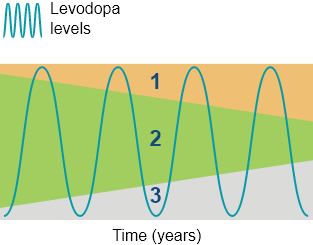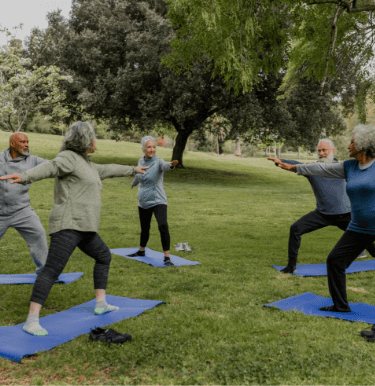Your current treatment
Are you truly thriving with your current treatment? Learn about the ups and downs of different forms of levodopa treatment—and why it matters.
Levodopa is considered the gold standard—or most effective treatment—for Parkinson’s motor symptoms.
Learn more about Parkinson’s treatments
Download PDFLevodopa is usually combined with carbidopa, a medicine that allows more levodopa to reach the brain where it can be its most effective and helps reduce nausea—a common side effect of levodopa.
Track your symptoms: help your doctor understand how your treatment is working
Download PDF
Immediate-release carbidopa/levodopa (CD/LD) the most commonly used form of levodopa, has been around since the 1970s. Immediate-release means the levodopa is released immediately after it is taken so that it can start to work quickly.
The controlled-release form was first developed in the 1990s. Controlled-release means that the levodopa is released slowly.
This slow-release formulation of CD/LD is no more effective than the immediate-release CD/LD form and it takes longer to start working. Because of these limitations, doctors often prescribe controlled-release together with immediate-release, further complicating the treatment regimen for patients and care partners.
Extended-release CD/LD is a form of CD/LD that contains both immediate- and extended-release components. This allows extended-release CD/LD to work quickly and sustain levodopa levels for longer than other levodopa formulations. However, when starting treatment with extended-release CD/LD, a higher levodopa dose is required compared to immediate-release. And it is not known whether starting extended-release CD/LD early will cause less dyskinesia in the future compared with other formulations.
Remember, it’s important to always discuss your Parkinson’s treatment with your doctor to determine which option may be right for you.

As Parkinson’s advances, each dose of your treatment may not last as long. This can lead to a roller coaster of ups and downs from dose to dose.
These ups and down can be described by 3 phases:

medicine is working but level of levodopa is too high—and you may experience involuntary movements you can’t control
medicine is working, and your symptoms are well-controlled
medicine is working, and you are not experiencing movements you can’t control or they are not impacting your daily activities
medicine no longer works, and symptoms return
Download and print a copy of terms doctors commonly use.
Download PDF

Starting a conversation with your doctor may help. Your doctor can determine the best treatment option for you and ensure you’re getting the most “Good On” time. More “Good On” time means more time to thrive.

